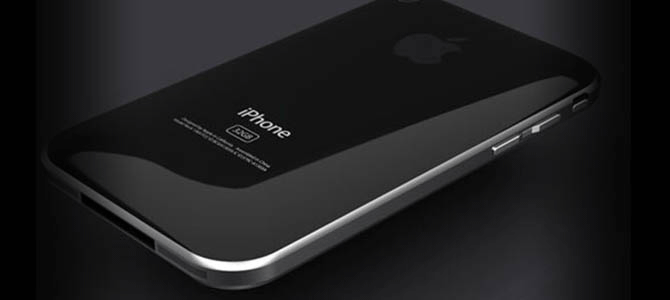 Regarding their entry into the 3D printing market, Apple continues to maintain an air of mystery. Their recent patent application for a color 3D printer is still floating in the ether somewhere, as are their prior 3D printing-related patent applications. They seem to be enjoying stirring the rumor pot just long enough to get people excited, then letting it settle again. Regardless, they’ve filed yet another patent application related to 3D printing, and while this one isn’t as glamorous or buzzworthy as an actual 3D printer, it’s still plenty interesting and could result in some major changes in the way certain electronic components are manufactured.
Regarding their entry into the 3D printing market, Apple continues to maintain an air of mystery. Their recent patent application for a color 3D printer is still floating in the ether somewhere, as are their prior 3D printing-related patent applications. They seem to be enjoying stirring the rumor pot just long enough to get people excited, then letting it settle again. Regardless, they’ve filed yet another patent application related to 3D printing, and while this one isn’t as glamorous or buzzworthy as an actual 3D printer, it’s still plenty interesting and could result in some major changes in the way certain electronic components are manufactured.
Investment casting is one of the oldest manufacturing techniques still being used today. To put it in the simplest terms, it involves liquid metal being poured into a mold, typically made of ceramic, and allowed to harden and cool. The ceramic mold is then blasted away, and voila, there’s your metal part. The ceramic mold itself is usually formed by covering a wax pattern with ceramic material; the wax is then melted away and the ceramic mold is ready to hold a liquid metal alloy. It’s a lot of material used in the process of creating one final part, and while it’s effective, it has its drawbacks, namely cost and material waste.
Apple’s patent application involves using 3D printing to form the mold. At first glance, this doesn’t sound like anything new or patentable – 3D printing is being used to manufacture just about everything, so why not molds for investment casting? What’s interesting is what Apple intends to do with the molds, however. The molds, formed layer by layer, can be configured for the formation of amorphous alloys, or glasslike metals that are typically used in the manufacture of medical equipment or electronic components, as they have good conductive properties. Their formation depends on the rate of the liquid metal’s cooling.
“However, little has been shown regarding how to utilize and/or shape these alloy systems into structural components, such as those in consumer electronic devices,” states Patently Apple. “In particular, pre-existing forming or processing methods often result in high product cost when it comes to high aspect ratio products (e.g., thin sheets) or three-dimensional hollow products. Moreover, the pre-existing methods can often suffer the drawbacks of producing products that lose many of the desirable mechanical properties as observed in an amorphous alloy.”
 As we’ve seen with so many other products, 3D printing allows for control, complexity and customization that just isn’t possible with other manufacturing methods. Apple’s 3D printed molds would be customized specifically for the molding of amorphous alloys that would form electronic components for phones, tablets, DVD players, remote controls and more. Apple can potentially do a lot with this new process. 3D printing eliminates the time and effort involved in casting the mold itself, leaving more time for efficient prototyping of new components. It also saves a lot of money and material waste.
As we’ve seen with so many other products, 3D printing allows for control, complexity and customization that just isn’t possible with other manufacturing methods. Apple’s 3D printed molds would be customized specifically for the molding of amorphous alloys that would form electronic components for phones, tablets, DVD players, remote controls and more. Apple can potentially do a lot with this new process. 3D printing eliminates the time and effort involved in casting the mold itself, leaving more time for efficient prototyping of new components. It also saves a lot of money and material waste.
If you’d like to delve deeply into Apple’s proposal, you can read the entire patent application here. One thing that is very clear is that Apple is very fond of 3D printing and intends to incorporate it into its manufacturing processes; whether that fondness will eventually lead to an actual 3D printer still remains to be seen. What do you think Apple’s intentions are? Discuss in the Apple 3D Molds forum over at 3DPB.com.
Subscribe to Our Email Newsletter
Stay up-to-date on all the latest news from the 3D printing industry and receive information and offers from third party vendors.
You May Also Like
Precision at the Microscale: UK Researchers Advance Medical Devices with BMF’s 3D Printing Tech
University of Nottingham researchers are using Boston Micro Fabrication‘s (BMF) 3D printing technology to develop medical devices that improve compatibility with human tissue. Funded by a UK grant, this project...
3D Printing Webinar and Event Roundup: April 21, 2024
It’s another busy week of webinars and events, starting with Hannover Messe in Germany and continuing with Metalcasting Congress, Chinaplas, TechBlick’s Innovation Festival, and more. Stratasys continues its advanced training...
3D Printing Webinar and Event Roundup: March 17, 2024
It’s another busy week of webinars and events, including SALMED 2024 and AM Forum in Berlin. Stratasys continues its in-person training and is offering two webinars, ASTM is holding a...
3D Printed Micro Antenna is 15% Smaller and 6X Lighter
Horizon Microtechnologies has achieved success in creating a high-frequency D-Band horn antenna through micro 3D printing. However, this achievement did not rely solely on 3D printing; it involved a combination...






























